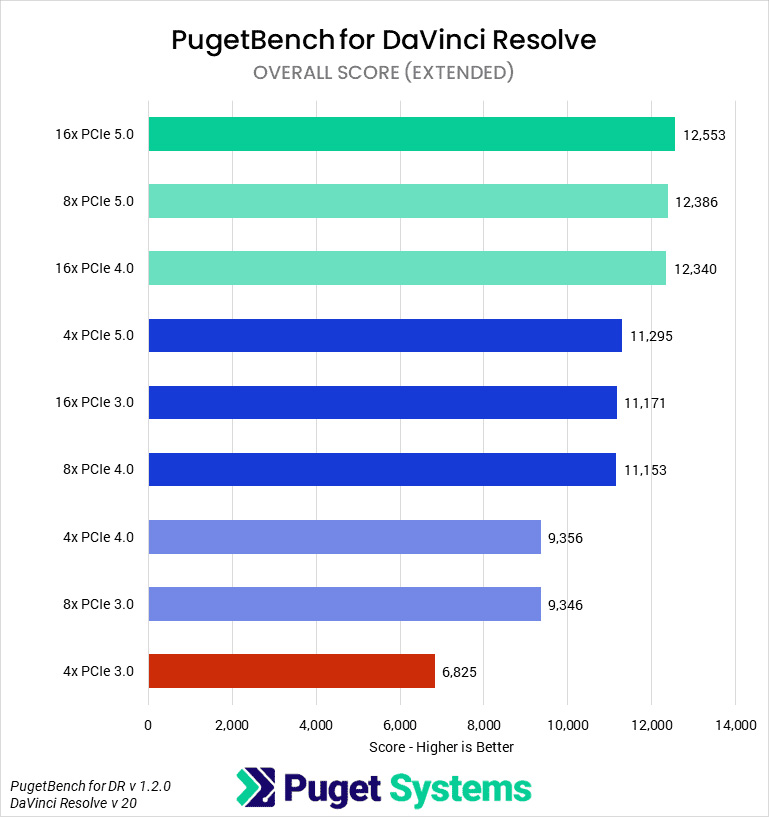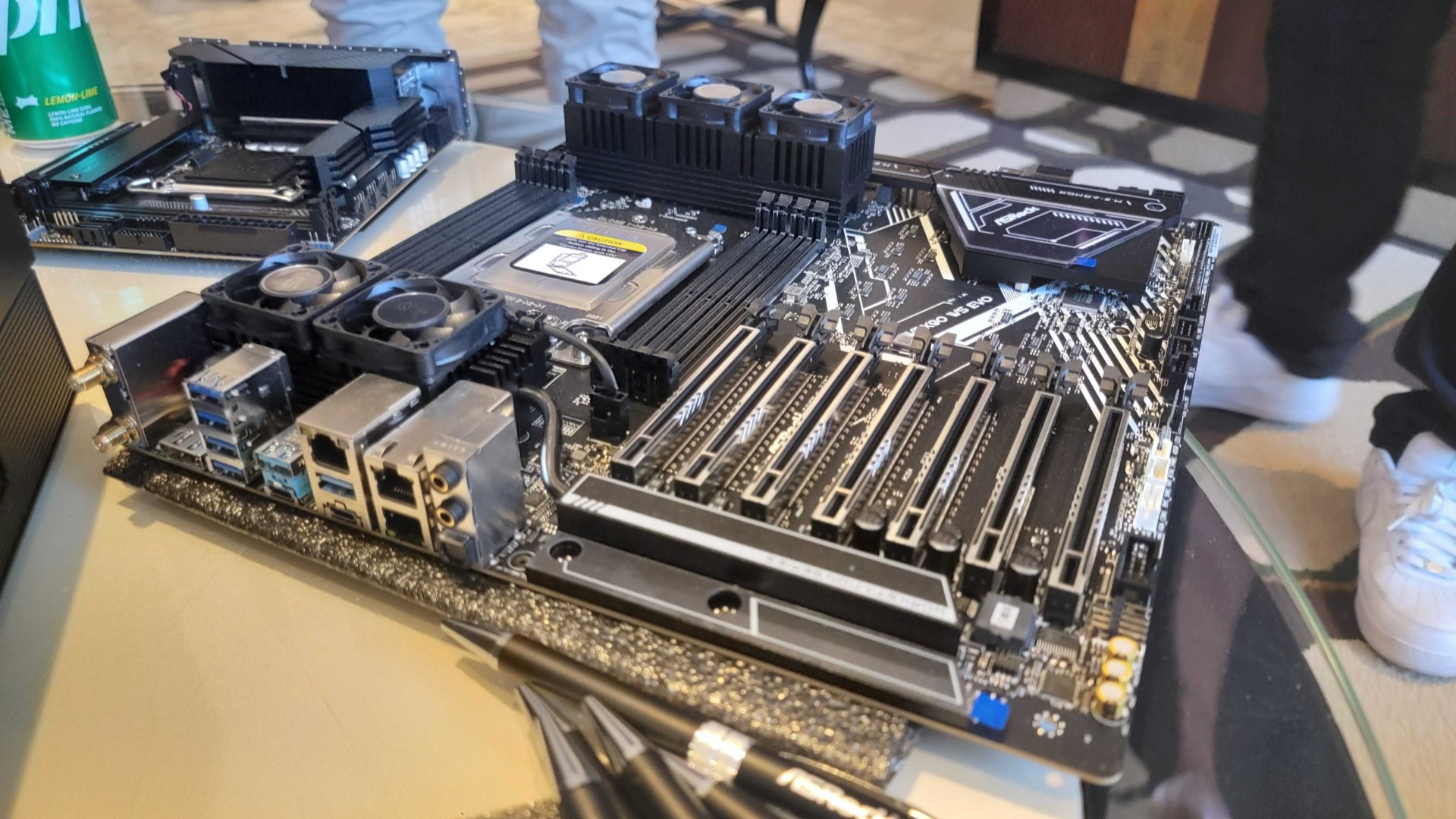It's always been clear that PCIe bandwidth has an effect on gaming, especially when playing on some of the most high-end GPUs. But what about content creation? Puget Systems put this idea to the test and found that lacking proper PCIe bandwidth can seriously hinder performance in video rendering and game development. That suggests professionals working with multiple add-in cards may need to take care in their placement to ensure the best possible performance for their workloads.
PCIe generation is almost exclusively down to your motherboard's specifications. But just because a board supports the latest PCIe 5 on its 16x slots doesn't mean they're all equal. Plugging cards into both slots can cause them to default to a mere 8x lane configuration, halving bandwidth for both cards. Installing additional NVMe SSDs can also reduce the number of available lanes, potentially impacting performance in a range of professional tasks. The same goes for older motherboards with support for older standards, too.

Puget proved that PCIe bandwidth can limit performance in its DaVinci Resolve benchmarks. The best performance was, unsurprisingly, with the PCIe configuration with the most bandwidth. Puget found only margin of error differences between PCIe 5 16x, PCIe 5 8x, and PCIe 4 16x. But when switching down to PCIe 5 4x, PCIe 4 8x, or PCIe 3 16x, performance took a 10% hit.
Dropping down one tier further to PCIe 4 4x or PCIe 3 8x saw a total dip of 25% from the original figures. That's the kind of performance drop-off that could have a serious impact on a business, potentially reducing profits through longer time to results, or more staff and equipment time required.
After Effects saw less of a drop off, with only the slowest PCIe configurations falling outside of the margin of error, but they still show an impact from having less available PCIe bandwidth. Puget recorded similar results with Unreal Engine 5.5 virtual production tests, where PCIe 4.0 4x and PCIe 3 8x were around 7% slower than the highest bandwidth configurations.
It also recorded a five percent difference between the highest and lowest bandwidth options in Blender, though the Llama large language model benchmark shows little effect.
In conclusion, it seems that available PCIe bandwidth can have a notable impact on performance in professional applications, and particularly in video editing. However, it should be noted that this test was performed with an Nvidia RTX 5090 graphics card. That's the fastest GPU in the world outside of some professional options, and it demands the most PCIe bandwidth of any card. Systems built around more modest GPUs may not suffer so much from PCIe bandwidth constraints.
For those on the cutting edge, though, be careful with your add-in card configurations if you want to manage PCIe bandwidth effectively. Or just wait for PCIe 6.
Follow Tom's Hardware on Google News to get our up-to-date news, analysis, and reviews in your feeds. Make sure to click the Follow button.

 4 months ago
82
4 months ago
82






 English (US) ·
English (US) ·